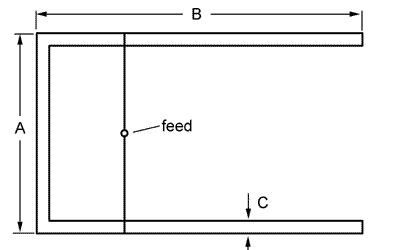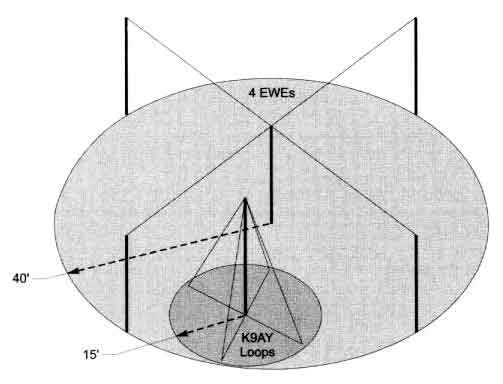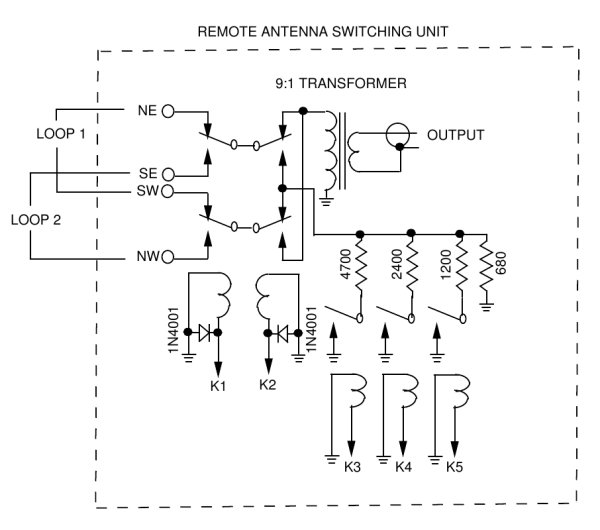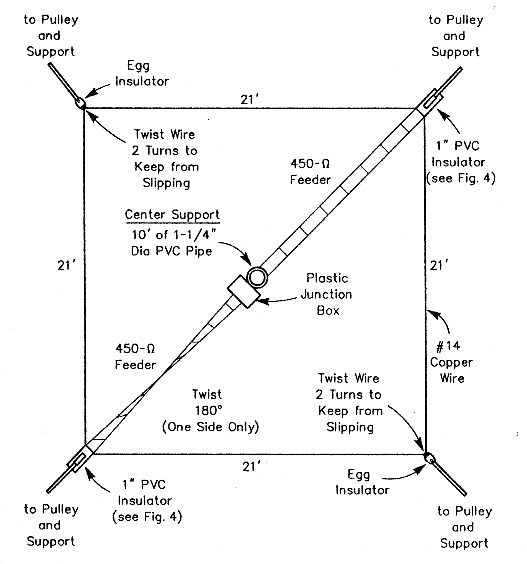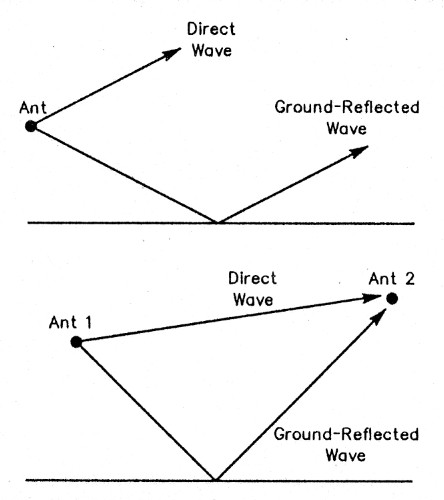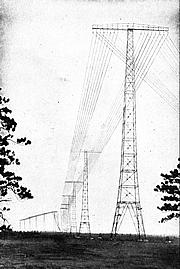by George Wallner, AA7JV This antenna was developed to meet the need by the TX3A Chesterfield DXpedition for a small, low-band, ground independent directional RX antenna that only requires two support poles. The antenna can provide reasonable performance for the space limited amateur, as it fist into a 60 x […]
Antennas
A revolutionary addition to the LF band segment. The principal problem of any LF antenna is its dependence on the ground properties. A low angle radiation is the mandatory, therefore an usual horizontally polarized antenna is useless ifnot located a half wavelength above the ground (i.e. 40 or 80 meters […]
The initial version of Mini-K9AY antenna was published in finnish here. The english translation by Mauno Ritola is here: Mini-K9AY K9AY antenna has triangular shape, height being 7.62 metres and width about 9.3 metres. Mini version of the antenna is much smaller. Height is 1.5 metres and width only 1 […]
a compact, directional receiving antenna by Gary Breed, K9AY first published in QST (ARRL), Newington, Sep 1997 Wish you had enough room for an effective low-band receiving antenna? You do! This four-direction system fits in a 30-foot circle! Low-band operators are always looking for ways to improve their hearing. As […]
While browsing my paper archives, I found two folded, together stapled paper sheets with almost unreadable pictures of a control box for the K9AY loop receiving antenna* (a note see below) and a preamp with filtered input which was unreadable at all, however the schematic recalls the already published K9AY […]
Here’s how you can make a low-cost, low-noise, 21-foot-square receiving antenna that’s certain to boost your DX ability. In his accompanying QST article (1), Brian Beezley, K6STI, brings to our attention the details of how an antenna can be designed to eliminate (or greatly reduce) power-line noise to aid low-band […]
Simplicity and performance combine to give birth to a compact antenna you’ll want to have! Noise can make a ham’s life miserable on any amateur band. As we approach the minimum of the sunspot cycle, many hams are discovering that noise can be particularly frustrating on the low bands. In […]
by Floyd Koontz, WA2WVL first published in QST (ARRL), February 1995 A New Design One fundamental of directive wire-antenna design is that two or more parallel wires carrying similar RF currents produce directivity regardless of the phase or amplitude of the currents, if the wires are separated significantly (greater than […]
By Floyd A. Koontz, WA2WVLFirst published in QST (ARRL), January 1996 You’ve seen the basic EWE, now you can have switchable, directional EWEs! Since the introduction of the EWE antenna in QST, many amateurs have improved their low-band receiving capability with a EWE. [1] In the correspondence I’ve received was […]
Established theory is timeless, but many amateurs do not have acces to the archives that contain clasical data of present-day interest. Medium frequency DXers should appreciate this update on an historical 1922 QST article. 1 By H. H. Beverage, ex W2BML* and Doug De Maw, W1FB** * silent key January […]

